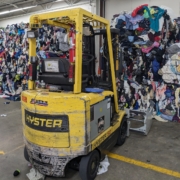Donating Media
Have you ever wondered if your old VHS tapes had any value? Are you holding on to CDs, but no longer have a player? Do you want to donate DVDs, but aren’t sure where to do so? Well, you’re not alone. I get asked these questions all the time.
Here are a few suggestions for you.
- CDs and DVDs can still be donated to Goodwill and Savers. Donate them if they’re in good condition with no scratches, in their original case. If they are scratched, consider donating them to an art school, an up-cycle artist, or crafter.
- Most VHS tapes are not accepted for donation, but some are still donate-able, especially Disney. Call Goodwill, Savers or Salvation Army before donating them to see if they’re interested in the ones you want to get rid of. If you’re ambitions and want to do some on-line research you may be able to sell some old VHS tapes. They can be sold on-line via Facebook Yard sale, Ebay, or other avenues.
- However, no resale stores take cassette tapes. You can offer them up for free on-line via Freecycle or Buy Nothing, but if you don’t want to put in the effort, they just go in the trash.
Call your local Staples or Best Buy store to see if they’ll recycle any of these items. I know the Staples in Attleboro recycles CDs and DVDs. Please recycle.









Follow Me